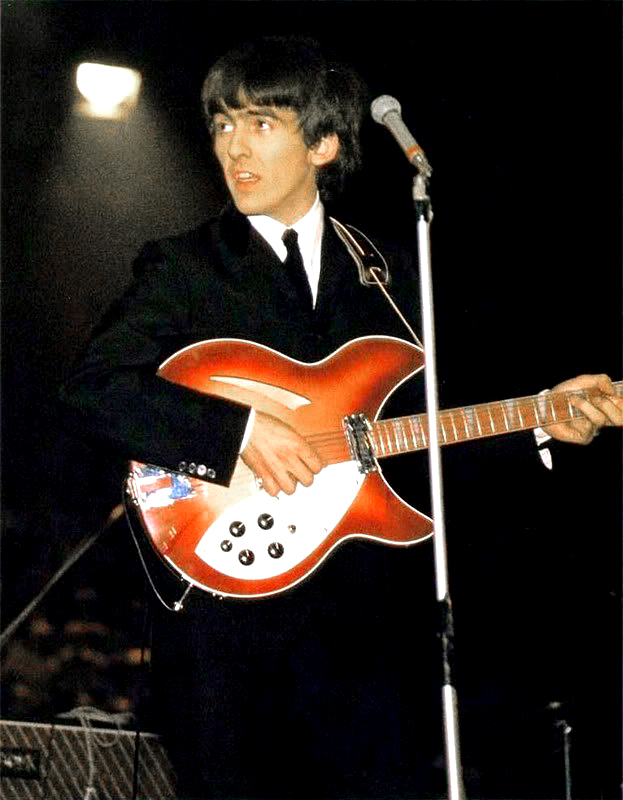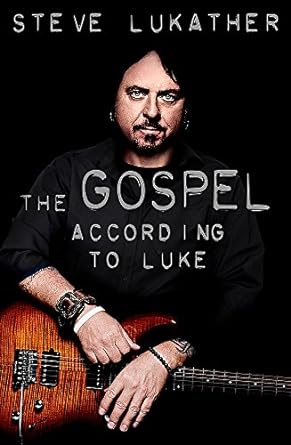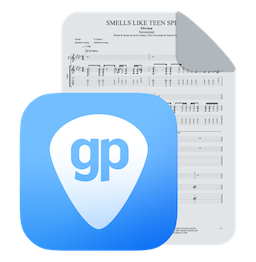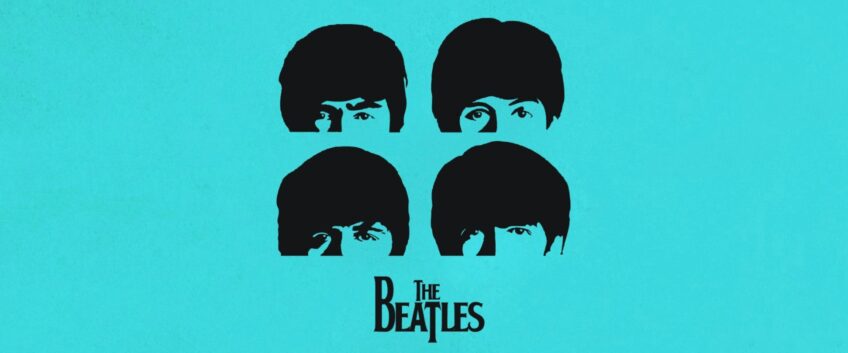
Is it easy to play the Beatles on the guitar?
Is it easy to play the Beatles on the guitar?
This is a question that entire generations of guitarists or future guitarists have asked themselves from the sixties to the present day.
Indeed, the Beatles are the band that has perhaps, more than any other, aroused and generated the most vocations in the entire history of rock music. While this seems more than obvious, the answer to the question posed remains more nuanced and complicated. I remember very clearly that even before taking guitar lessons, I had bought a Beatles songbook (this was before the advent of the internet) to try to play the songs of my favorite band on a simple acoustic guitar, at first, and gradually progressing in the apprenticeship of the instrument I marveled at the fact that I was able to interpret these songs with the help of only a few chords. I was playing songs like Love Me Do, A Hard Day’s Night, Can’t Buy Me Love or Get Back, with ever-increasing pleasure.
But the more I progressed in my search both to tame the guitar and to perform the songs that I liked the most, the more I discovered new things and the more an enchanted world opened up to me that I gradually discovered over the course of my investigations: first simple things like the guitar part of And I Love Her, then more complicated, like Day Tripper’s or Michelle‘s, and the more I penetrated into this magical forest that is the music of the Beatles, the more beautiful things appeared and simultaneously, the more I began to master my instrument. It is precisely this apparent simplicity that often makes the Beatles’ music seem easy to play.
Years later, when I became the guitarist of The Rabeats (which is a famous Beatles cover band in France), I had to get even closer to the guitar parts of the Beatles, and I was able to measure all the refinement and all the creative diversity of them.
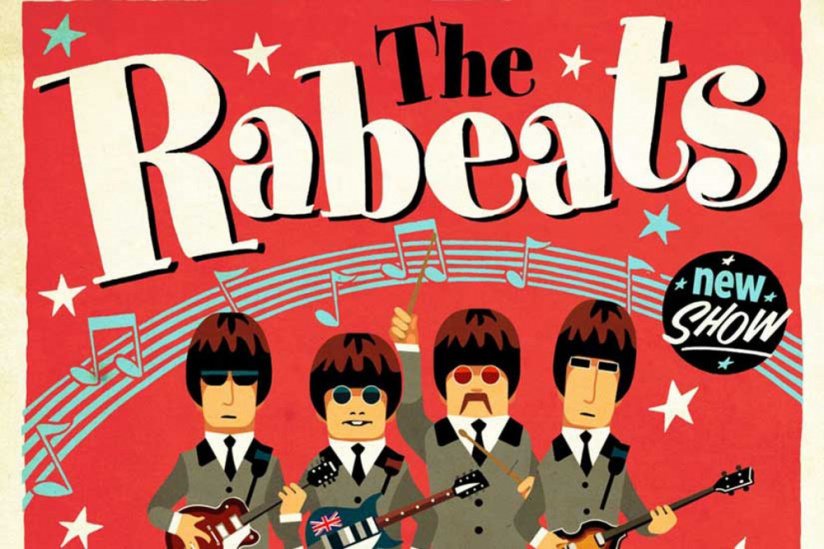
This decisive step was the source of constant evolution for me as a musician. After having scoured for twenty years all the big stages of France and having played a lot abroad, I still interpret these guitar parts today with the same delight as I felt on the first day.
What about George Harrison?
If in the context of this article we are going to look more specifically at George Harrison’s guitar parts, it should not be forgotten that the Beatles are a band made up of two guitars, a bass and drums. The guitar parts of John Lennon, who is considered the rhythm guitarist of the band, are of perfect execution and great efficiency, his pickings, as in Julia, Dear Prudence or Happiness Is A Warm Gun are of an accomplished beauty and quality, as are also his rhythms, in All My Loving or Revolution, his riff in I Feel Fine, his arpeggios in I Want You or Because in particular.
It should be noted here that his pickings have this particularity that it is always the A string that is played first, even if the root of the chord is on the E string. Some solos are even played by Lennon, such as the one on Get Back or even the one on For You Blue, performed on slide guitar.
The guitar part of I’ve Got A Feeling, as well as that of Revolution, are examples of John Lennon’s often underestimated, or at least unknown, talent as a guitarist.
As for Paul McCartney, although he was the Beatles’ official bassist, it should be remembered that he was first and foremost a guitarist in the band before the departure of the previous bassist, Stu Sutcliffe in 1961, and that he also plays very interesting guitar parts like Blackbird‘s, which is very difficult to play because it’s played in a very personal and unique way, or even Taxman‘s guitar solo, which is a song composed by Harrison, as well as one of the three guitars in the final epic solo of The End.
As far as the chord progressions of the songs are concerned, if as I mentioned before, some songs appear at first glance to be very simple, especially during the first years, others on the other hand bring increasing complications as is the case for While My Guitar Gently Weeps, Penny Lane, I Am The Walrus or Something, for example. But it’s from the very heart of the songs that we’re going to draw the most interesting things, in the arrangements, the gimmicks, the interventions, the phrasing and the guitar solos.
About the arrangements
We cannot omit to mention here George Martin, rightly considered by some as the fifth Beatle, and who, coming from a classical formation, was able to bring a new dimension to the band with magnificent arrangements, especially in the strings parts as in Yesterday, Eleanor Rigby, You Never Give Me Your Money or Good Night, or brass parts as in Got To Get You Into My Life or Martha My Dear, and even in his direct participation on the Beatles’ records as an instrumentalist, as in the piano solo in In My Life, Good Day Sunshine or Lovely Rita in particular, or even the harpsichord part of Fixing A Hole. But now let us consider what is the case with George Harrison.
Harrison’s influences appear to be very diverse and eclectic, ranging from Andrés Segovia to Ravi Shankar, Django Reinhardt, George Formby, Chuck Berry, Buddy Holly, Scotty Moore, Carl Perkins, Chet Atkins and Curtis Mayfield. Norwegian Wood, in which he introduced a part of Sitar, is one of the earliest examples of the genre in Western music.
Learning the Sitar from Ravi Shankar turned his life upside down both as a musician and spiritually. The countless hours and nights spent playing on stages in Hamburg from 1960 to 1962, with the help of amphetamines to keep them going, of course played a decisive role in the Beatles’ solid musical formation, with incomparable experience and ready to take on the world. But what motivated and contributed to the constant and perpetual search for new guitar arrangements is once again largely due to the unavoidable role of George Martin who was the inexhaustible driving force of the band’s music in the studio, then when the Beatles stopped playing live at the end of November 1966, this trend has been further accentuated and amplified, as can be seen with the albums SGT. Pepper’s Lonely Hearts Club Band and Magical Mystery Tour. But now let’s consider the many facets of George Harrison’s playing through a few examples of songs.
George Harrison appears equally at home in classic rock and roll songs such as Roll Over Beethoven (Chuck Berry) or Long Tall Sally (Little Richard) in which his mastery of the guitar is flawless, as on a nylon-string guitar with a track like Till There Was You where he performs a solo of perfect musicality and fluidity. When One After 909 was released, played in January 1969 on the roof of the Apple house, although the Beatles’ music had changed at that time, Harrison showed that he had retained all his rock and roll culture in what is perhaps one of his best solos. As for the solos, we must mention those of Hey Bulldog, Old Brown Shoe, Let It Be, Something, Octopus’s Garden which all demonstrate a perfect technique and mastery of the instrument, and which reveal a progressive musical evolution since the magnificent solos of All My Loving or Nowhere Man. It should be noted that after his return from India and his assiduous learning of the sitar, he multiplied the use of bends (a technique omnipresent in the practice of sitar) in his playing. As for Honey Pie‘s solo, it offers an example of Harrison’s ability to perform a jazz solo. We can also recall that the masterful solo of While My Guitar Gently Weeps is the work of his close friend Eric Clapton.
In A Hard Day’s Night, Harrison uses a 12-string guitar, a Rickenbacker 360/12 for the solo, which was recorded in slow motion and then sped up for the desired effect, and was dubbed by George Martin on piano.
George Harrison playing his Rickenbacker.
Help! is showing us the example of Harrison’s technical prowess with the very fast guitar riff that precedes each verse, Gary Moore himself was in awe of this phrasing.
For And Your Bird Can Sing, Harrison composed a theme of very high quality both melodic and harmonic, a theme harmonized in thirds and with Paul McCartney playing the second voice, because the recordings were still made in four tracks at that time (1966), in fact this strong theme makes all the interest of the piece and gives it its particular color.
Strawberry Fields Forever marked the appearance of the slide guitar that Harrison would perfect towards the end of 1969 while touring briefly with Delaney & Bonnie and which would become an integral part of the quintessence of his game in the following years, to the point that Ry Cooder himself considered him one of the greatest in the field.
Harrison’s arrangements are unique in that they create something new, a different atmosphere; in Everybody’s Got Something To Hide Except For Me And My Monkey, there’s this blues rock riff that accompanies the whole song giving it great energy and strength, in Dear Prudence there are these phrases played in octaves, which are admired by Ian MacDonald, and which concretize the apotheosis of the song in a masterful way, those arpeggios in staccato notes in Oh Darling that bring so much to the color of the title, and all those sumptuous interventions in You Never Give Me Your Money and in the whole Abbey Road album. Here Comes The Sun offers an example of a beautiful and complex arpeggio rhythm played with a pick on an acoustic guitar with a capo placed in the seventh position and once again demonstrates George Harrison’s talents both as a composer and a guitarist.
In conclusion
George Harrison’s legacy as a guitarist from the late sixties to the present day is unparalleled and reflects the infinite qualities of his playing. It would be impossible to draw up an exhaustive list of the innumerable musicians he influenced; these include Brian May, Johnny Marr, Gary Moore, Peter Frampton, John Frusciante, Dave Grohl, Noel Gallagher.
Steve Lukather, in his autobiography, The Gospel According To Luke, explains that it was George Harrison who inoculated him with the unquenchable thirst to become a guitarist when he was only six years old, after watching the Beatles on The Ed Sullivan Show on television in February 1964.
Harrison is universally regarded as a guitarist who exerted a major influence on pop-rock music and left his mark on the musical universe to come. His varied and protean arrangements, always of incredible accuracy and meticulousness, sublimated the compositions of the Lennon/McCartney duo by giving them that extra dimension necessary for any great opus. If the Beatles really laid the foundations of what we now call rock or pop, George Harrison defined and inscribed the role that the guitar played as an instrument in this musical genre.
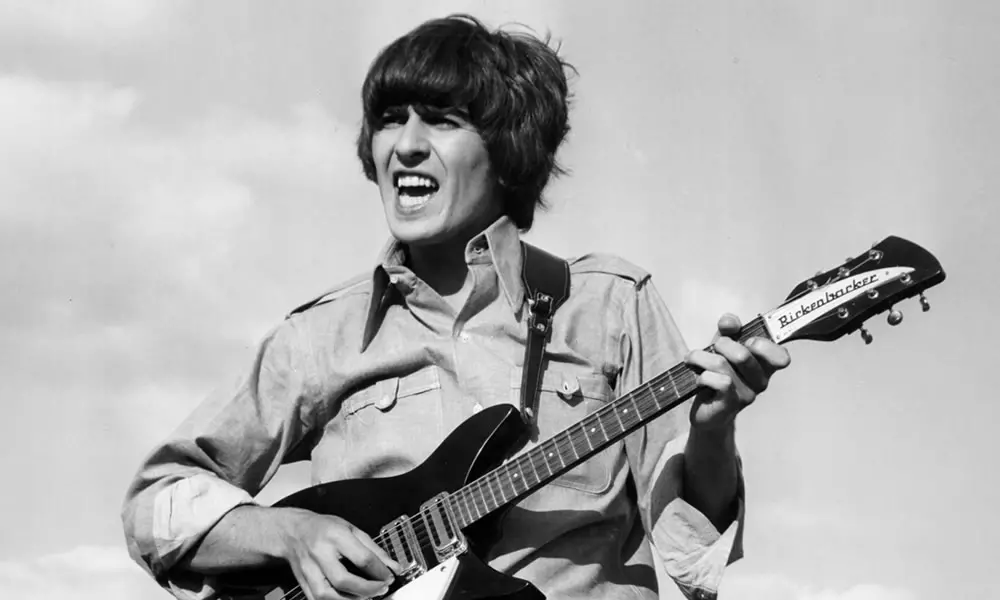
Also, the difficulty of playing the Beatles’ guitar parts lies to a large extent in the style of each of the musicians, Harrison, Lennon and McCartney, who, having not received any musical training as such, have been able to develop a particular way of playing that is personal to them, and therefore complicated to reproduce, but also in the complexity, in the multiplicity of styles and techniques used, in the subtlety, precision and cleanliness of execution And in the end, to answer the question: “Is it easy to play the Beatles on the guitar?”, we will answer in the negative.
A article by Momcilo Milovanovic.
Leave a comment
Your email address will not be published.
| Title | Artist | |
|---|---|---|
Stairway To Heaven

|
Led Zeppelin | |
The Thrill Is Gone

|
B.B. King | |
| Highway to Hell | AC/DC | |
Master of Puppets

|
Metallica | |
Hotel California

|
The Eagles |

